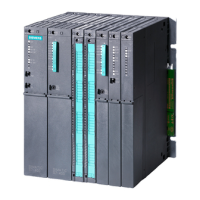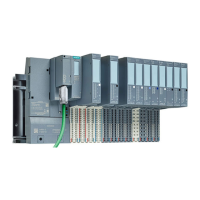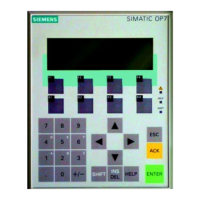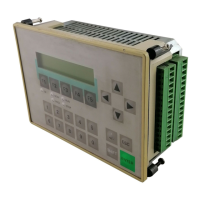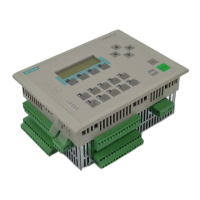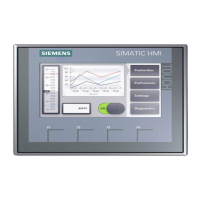Supplementary information
18.16 CPU 410 cycle and reaction times
CPU 410 Process Automation/CPU 410 SMART
System Manual, 05/2017, A5E31622160-AC
373
● Case 1: The system sets an output channel of the digital output module after a digital
input signal is read in. The result is as follows:
Response time = 45 ms + 4.8 ms = 49.8 ms.
● Case 2: The system reads in and outputs an analog value. The result is as follows:
Response time = 45 ms + 200 ms + 2.5 ms = 247.5 ms.
Interrupt response time
Definition of interrupt response time
The interrupt response time is the time from the first occurrence of an interrupt signal to the
call of the first instruction in the interrupt OB.
General rule: Higher priority interrupts are handled first. This means the interrupt response
time is increased by the program execution time of the higher-priority interrupt OBs, and by
previous interrupt OBs of the same priority which have not yet been processed (queue).
Note that any update of the standby CPU extends the interrupt response time.
Calculating the interrupt response time
Minimum interrupt response time of the CPU
+ minimum interrupt response time of the
signal modules
+ cycle time on PROFIBUS DP or PROFINET IO
= Shortest interrupt response time
Minimum interrupt response time of the CPU
+ maximum interrupt response time of the
signal modules
+ 2 * cycle time on PROFIBUS DP or PROFINET IO
= Longest interrupt response time
Hardware and diagnostic interrupt response times of the CPUs
Table 18- 19 Hardware and interrupt response times; maximum interrupt response time without com-
munication
Hardware interrupt response
times
Diagnostic interrupt response
times
CPU 410-5H stand-alone mode

